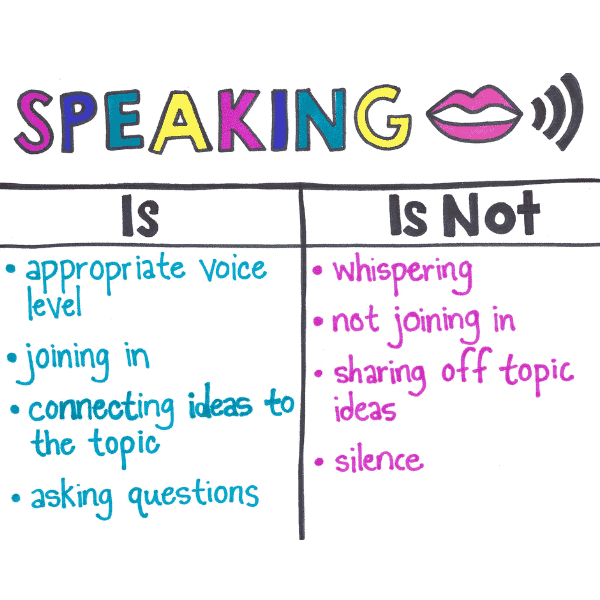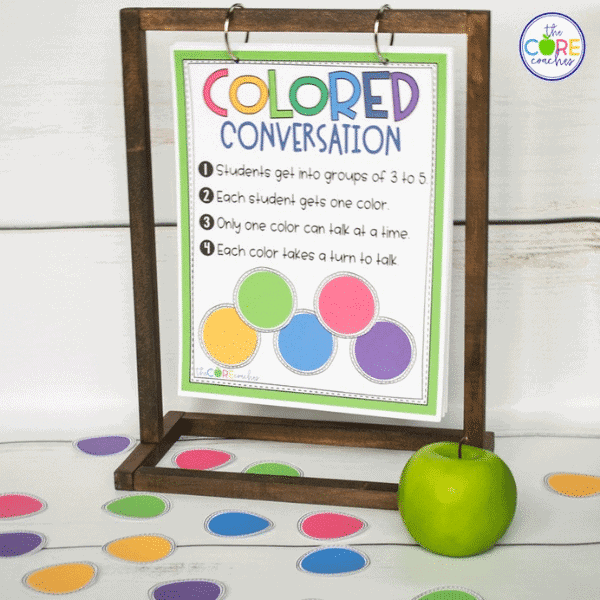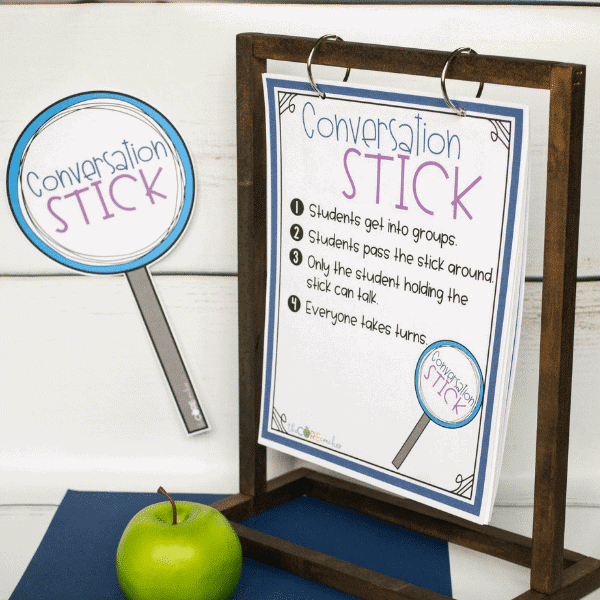Discussion Strategies that Increase Student Engagement
Expressive and receptive language skills are arguably some of the most important skills that students will need in the real world. Every relationship and job requires strong communication skills involving speaking and listening, however, we believe these standards are the most overlooked in the classroom.
As teachers, it’s easy to think we are naturally including speaking and listening in our daily instruction. However, just providing opportunities for our students to speak and listen, does not help them get any better at it. We need to teach with intention.
We feel speaking and listening should be at the heart of all academic lessons. The following strategies can help you intentionally incorporate discussion strategies and accountable talk into your daily instruction in a way that will help students remain engaged.
Rules of Conversation
We suggest beginning by teaching “Rules of Conversation” lessons. This helps establish norms and gives students agreements to refer to the rest of the year. As a class, create a “Looks Like/Sounds Like” T-Chart for both speaking and listening and ask student what respectful, active speaking and listening looks and sounds like. Spend time role-playing the behaviors. Post the anchor chart and refer to it constantly.

Next, teach students rules of conversation. Most kids need to be explicitly taught speaking and listening responsibilities and have time to practice and receive feedback to become productive members of conversations. Model these conversation stems and have pairs and small groups of students practice in front of the class. In primary grades, start with only 2 stems for Speaking and Listening. When students feel comfortable, add 2 stems for building.
Practice Discussion Strategies in the Classroom
Last, give students opportunities to practice the rules of conversation in pairs and small groups.

Click here to learn more about how we use interactive read-aloud stories as a springboard for classroom discussions.
We all know getting students to have meaningful small group discussions can be challenging. It’s likely your classroom has had issues with off topic conversations, arguing, or talkative students dominating the conversation while other students don’t participate.
Related: What to include in a Read Aloud Lesson Plan
To address these issues, teach and master a few discussion strategies that will promote accountable talk and ensure ALL students participate and meet the Speaking and Listening Core Standards.
Here are a few of quick and easy discussion strategies that keep our students engaged:
Conversation Chips
Conversation chips are a great way to hold students accountable for discussion while at the same time limiting the amount each student can participate. It is an excellent strategy for every type of learner in your classroom. First, the teacher assigns students into small groups and provides a topic or text for them to discuss. Then each student gets 3 conversation chips. Students can only add to the discussion if they have a chip. Teacher can set an expectation that each student needs to contribute all chips to ensure all students are participating in the discussion. It is a perfect solution to get all students equally participating.

Conversation Stick
Another effective and engaging strategy is conversation sticks. This one is simple. Students can only talk if they are holding the conversation stick. Again, teachers can set expectations that each student needs to hold the stick so everyone equally participates.

Numbered Heads Together
Try our FREE Numbered Heads Together discussion strategy to get meaningful discussions started in your classroom.
With the Numbered Heads Together discussion strategy, each group member gets a number (number tokens included in download), then the teacher asks a question. The small group works together to think of an answer. Every student must know the answer because the teacher can call on any number to give the answer for the group. It is a great way to engage students and ensure participation.
Click here to get 10 of our favorite discussion strategies, complete with colorful posters and student accountability conversation recording sheets!
Related Article: Text Dependent Questions





